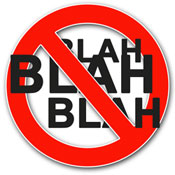What Mr Trump said, how he said it and how it was heard

Photo by Pau Casals on Unsplash
/ LANGUAGE

“Everyone who thinks at all has noticed that our language is practically useless for describing anything that goes on inside the brain.”
– George Orwell
For a man who wears his intellectual bankruptcy and linguistic imprecision as a badge of honour, Donald Trump is remarkably pointed and careful about what he says, how he says it and how it’s heard.
That particular style of oral communication is at the heart of the debate during Mr Trump’s second impeachment trial in the US Senate.
On January 6, while repeatedly telling his loyal supporters to “fight”, just before they headed to the Capitol, Mr Trump also used – just once – the word “peacefully”. That has allowed him to claim he was not encouraging violence.
The same sort of thing happened last year when Mr Trump took the stage with Joe Biden in the first of the three 2020 presidential election debates.
On national television, Mr Trump addressed the Proud Boys, the far-right misogynist formation that was recently designated a terrorist group by Canada. He told the Proud Boys to “stand back and stand by” and then added “somebody’s got to do something about antifa and the left”, which gave the impression (to the ecstatic Proud Boys, as well as to everyone else listening) that Mr Trump saw the far-right group as the answer to left-wing protestors.
In fact, what it suggested went a bit further too: that the Proud Boys were the solution – not the problem – in America and that left-wing groups are one of the problems.
The Proud Boys celebrated Mr Trump’s statements, correctly interpreting them as an endorsement.
But Mr Trump had also cannily offered fuzzy enough back-to-back statements to be able to claim he hadn’t encouraged violence.
David Leonhardt of The New York Times recently described Mr Trump’s speaking style as seeming to be “deliberately murky”. It allows his supporters to hear him in one way, Mr Leonhardt said, with a clear message, possibly even a command. But Mr Trump stops just short of explicitly delivering that message.
This is exactly right. Mr Trump’s understanding of how language works is both canny and uncanny – and, more to the point, dangerous.

